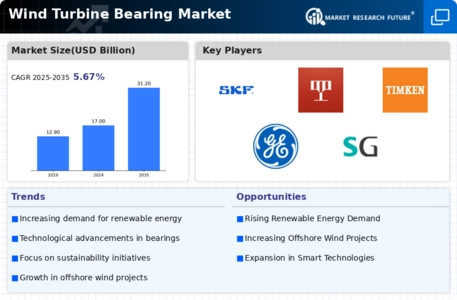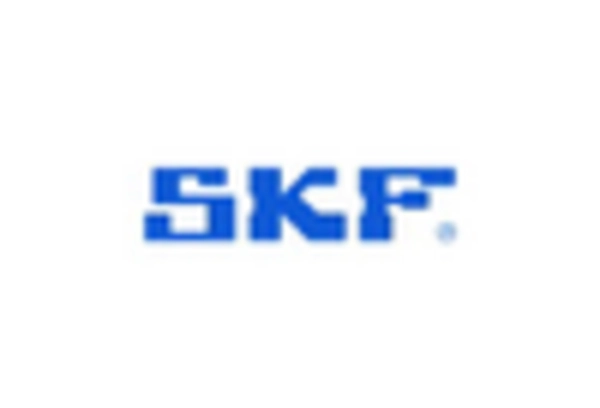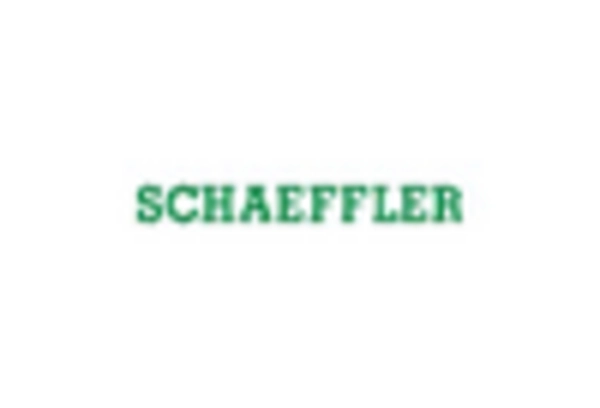Government Incentives and Policies
Government incentives and supportive policies are pivotal in propelling the Wind Turbine Bearing Market. Many countries have implemented favorable regulations and financial incentives to promote renewable energy projects. For example, tax credits, grants, and subsidies for wind energy installations encourage investments in wind farms, subsequently increasing the demand for wind turbine components, including bearings. As a result, the market for wind turbine bearings is expected to expand, driven by these supportive measures. The alignment of government policies with renewable energy goals is likely to create a conducive environment for the growth of the Wind Turbine Bearing Market.
Rising Energy Efficiency Standards
The implementation of rising energy efficiency standards is influencing the Wind Turbine Bearing Market. As energy efficiency becomes a priority for both manufacturers and consumers, there is a growing emphasis on optimizing the performance of wind turbines. Bearings that contribute to enhanced energy efficiency are in high demand, as they can significantly impact the overall output of wind energy systems. Manufacturers are thus investing in research and development to create bearings that not only meet but exceed these efficiency standards. This focus on energy efficiency is likely to drive innovation and growth within the Wind Turbine Bearing Market.
Growing Offshore Wind Energy Projects
The expansion of offshore wind energy projects is emerging as a significant driver for the Wind Turbine Bearing Market. Offshore wind farms are becoming increasingly popular due to their higher energy generation potential compared to onshore installations. The unique challenges associated with offshore environments necessitate the use of specialized bearings that can withstand harsh conditions, such as saltwater corrosion and extreme weather. As investments in offshore wind projects continue to rise, the demand for robust and reliable bearing solutions is expected to increase. This trend indicates a promising outlook for the Wind Turbine Bearing Market as it adapts to the specific needs of offshore applications.
Increasing Demand for Renewable Energy
The rising demand for renewable energy sources is a primary driver for the Wind Turbine Bearing Market. As nations strive to reduce carbon emissions and combat climate change, investments in wind energy are surging. According to recent data, the wind energy sector is projected to grow at a compound annual growth rate of approximately 8.4% over the next decade. This growth necessitates the production of high-quality bearings that can withstand the operational stresses of wind turbines. Consequently, manufacturers are focusing on developing advanced bearing technologies that enhance efficiency and durability, thereby supporting the overall expansion of the Wind Turbine Bearing Market.
Technological Innovations in Bearing Design
Technological innovations play a crucial role in shaping the Wind Turbine Bearing Market. The introduction of advanced materials and design methodologies has led to the development of bearings that offer improved performance and longevity. For instance, the use of composite materials and enhanced lubrication systems can significantly reduce friction and wear, which are critical factors in turbine efficiency. Furthermore, predictive maintenance technologies are being integrated into bearing systems, allowing for real-time monitoring and reducing downtime. This trend not only enhances the reliability of wind turbines but also drives the demand for sophisticated bearing solutions within the Wind Turbine Bearing Market.


















Leave a Comment